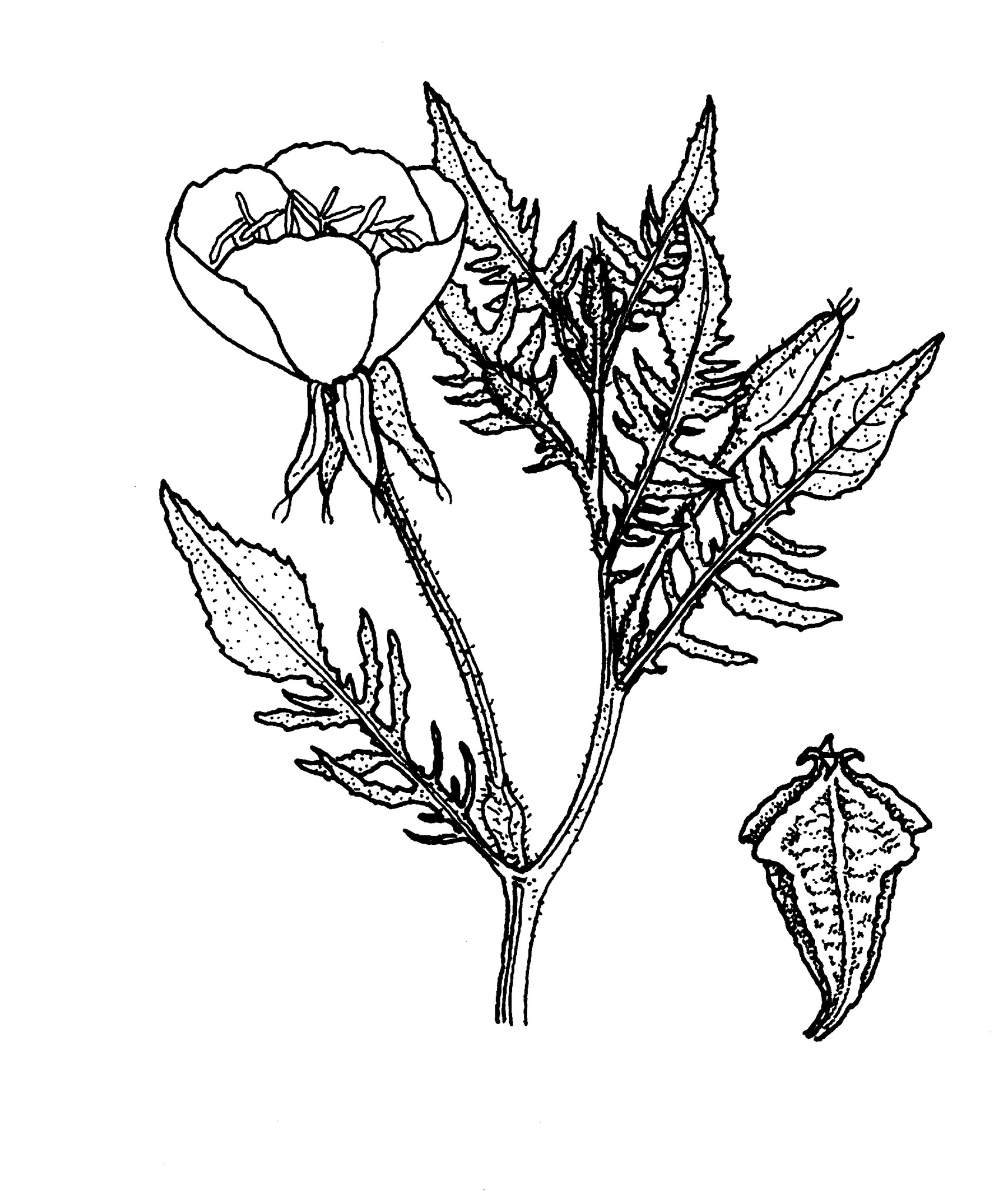
Classical name possibly from the Greek oinos — wine, thera — pursue, imbibe; probably referring to the one-time use of the roots of plants in this genus for wine-making.
Annual, biennial or perennial herbs or subshrubs, mostly erect, rarely more or less stemless. Leaves alternate, simple, entire to deeply lobed, often wavy, with or without a stalk, those in the basal rosette often slightly different from those along the stem. Flowers regular, solitary or in spike-like clusters. Sepals and petals 4. Calyx tube generally elongated and prominent. Petals mostly yellow, sometimes pink or white, often becoming pink or darkening with age. Stamens 8. Ovary 4-chambered; stigma 4-lobed. Fruit a cylindrical or club-shaped loculicidal capsule.
Known horticulturally for the flowers of some species which open in the evening, producing a very attractive scent, then fade the next day.
The genus includes, unfortunately, several cosmopolitan weeds and is represented in all Australian states by weedy species, about 15 in all; for this reason extreme care should be taken in their cultivation.
About 120 species, mostly from temperate America.
Seeds or division.
Petals not narrowing at the base; anthers attached at the centre; calyx tube generally long.
Raven (1962a), Dietrich (1977), Straley (1977), Raven et al. (1980), Dietrich & Wagner (1988).
Source: (2002). Fuchsia. In: . Horticultural Flora of South-eastern Australia. Volume 3. Flowering plants. Dicotyledons. Part 2. The identification of garden and cultivated plants. University of New South Wales Press.
